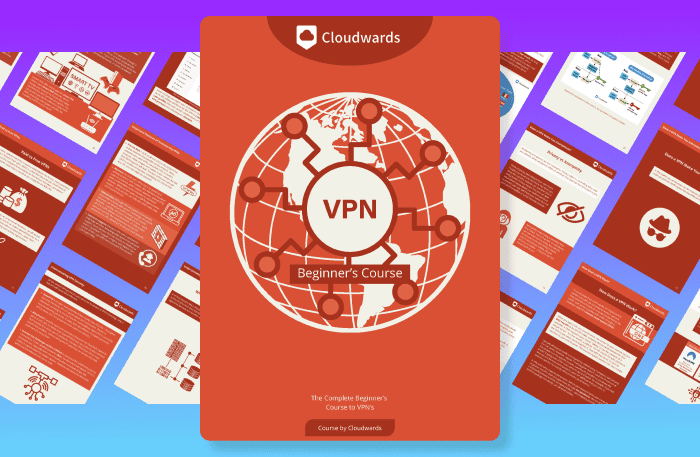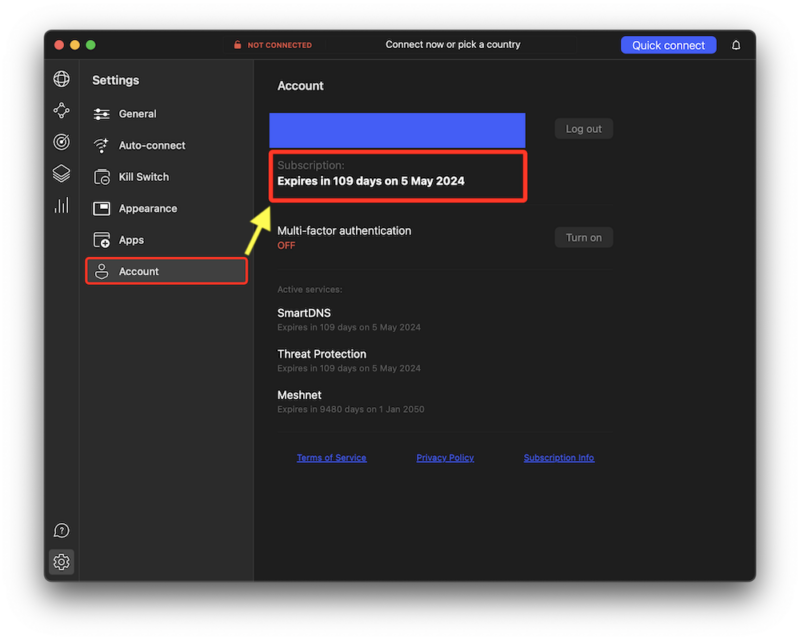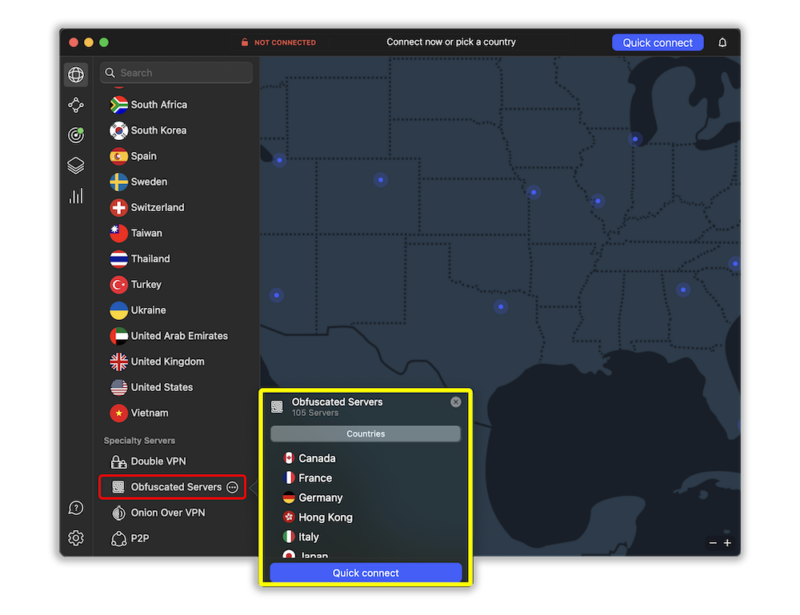How to Fix NordVPN Not Connecting: Fixing VPN Issues in 2025
NordVPN may be the best VPN, but it’s not immune to the occasional connectivity hiccup. Causes can include unstable internet, VPN blocks, incorrect app configurations or device firewall interference. Here’s a breakdown of all the fixes you can try if you catch NordVPN not connecting.
NordVPN not connecting is a common problem for frequent users. It may top our best VPN list, but that doesn’t make it immune to connectivity issues due to software glitches, firewall blocks or VPN server downtimes. The good news is that you can comfortably fix most of these without external help.
Some simple fixes include updating the NordVPN app, checking your internet connection and restarting the device. If NordVPN still doesn’t work, you can move on to more advanced solutions like changing DNS servers or opening blocked ports. If you’ve been experiencing connection problems while using NordVPN, you’ve come to the right place.
-
02/13/2024 Facts checked
We rewrote this article to include more detailed fixes for major operating systems.
Why Is NordVPN Not Connecting?
There could be many reasons for NordVPN not working. A common cause is disconnected internet, which could be due to ISP downtimes, a power blackout or problems with your modem. Firewalls and antivirus on your device could potentially interfere with your VPN connection — a lot of firewalls block ports that VPNs use, like port 443.
The problem could also be on NordVPN’s end, as server downtimes occasionally happen. NordVPN servers can be down due to urgent maintenance or very rarely because of cyberattacks. It could even be that you simply forgot to update your NordVPN app.
Protect Your Privacy. Get Our Free VPN Guide Now!

- Comprehend the essential role a VPN plays in safeguarding your digital life
- Gain a deep understanding of how VPNs function under the hood
- Develop the ability to distinguish fact from fiction in VPN promotions
Whatever the cause, it can be very frustrating considering how important a VPN is for unblocking restricted content and keeping you safe from surveillance and cyber threats. We’ll explore all the possible causes of NordVPN connectivity problems and provide detailed solutions for each.
How to Fix NordVPN Not Connecting
No matter which connection problem you are experiencing, try the following tips to get NordVPN working again.
Switch to a New Server Location
This is the most basic solution to start with when NordVPN does not connect on your first several attempts. With more than 6,000 servers, you’ll have plenty to choose from. Switch to different VPN servers until you find one that works. It shouldn’t take too long.
Try Another Device
Install NordVPN on a device other than the one with which you’re having problems. If it connects just fine, you’ll know that your problem is with the settings on the original device. If the new device also has problems, the issue might be with NordVPN itself, your ISP or your WiFi. Reset the network settings in your network and sharing center and check whether that fixes the issue.
Update the NordVPN App
Every NordVPN update comes with fixes for connection bugs. You will keep encountering problems if you continue using an outdated VPN app. Updates should download automatically, but if your version is not the latest, update it with the following steps:
- Uninstall the current NordVPN app on your device.
- Reboot your device to clear any residual installation files.
- Locate NordVPN in an app store or on the official download page to get the latest version of the VPN software.
- Install it, log in and make sure that it connects.
Restart Your App and Device
Restarting the NordVPN app forces it to make a new connection, usually eliminating any bugs that may have been causing problems in your previous attempts. Here’s how you can do this:
- Close the NordVPN app completely. You can use the task manager on Windows or force quit on macOS to shut it down. On Android and iOS, simply swipe it off the screen.
- Give it a few seconds to fully shut down, then restart your device.
- Relaunch the NordVPN app and try connecting again to see whether the problem has been solved.
Check Whether Your Subscription Has Expired
If you’re correctly logged in and still can’t connect, check whether your subscription has expired. You can do this with the following quick steps:
- Launch the NordVPN app and go to “settings.”
- Scroll to the bottom, tap on “account,” and check under “subscription” to see whether it has expired. NordVPN displays the number of days left and turns red when it expires. Sign up for another NordVPN subscription to get it running again.

If you use a NordVPN router, ensure that you have the correct service credentials separate from those of your regular VPN account. Additionally, beware of scam URLs like nord-vpn.club, which is known to illegally sell cracked VPN accounts. You risk someone scamming you out of your hard-earned money and exposing yourself to identity theft or worse.
Change VPN Protocols and Ports
Sometimes, the specific protocol you’re using may result in connection glitches, so switching to another protocol can help. NordVPN has three protocols — IKEv2, OpenVPN and NordLynx, each of which is suited to certain activities. NordLynx is the default protocol, but you can switch to another one in the app settings:
- Launch NordVPN
- Go to “settings”
- Tap on “general” and change the protocol under the “VPN protocol” section
Additionally, if the ports that VPNs use to create connections are blocked, you won’t be able to connect. Common frequently used ports are 500 (UDP) and 443 (TCP). Check out these detailed guides on how to find and open your NordVPN port numbers on desktop devices and routers.
Use Obfuscated Servers
If you’re in a country that censors VPNs, you won’t be able to connect without getting around the firewall. Obfuscated servers mask the fact that you’re using a VPN provider to help you bypass these blocks and restore your connection. To use obfuscated servers, follow these steps:
- Launch NordVPN
- Go to “settings” and change the protocol to OpenVPN. You should see the “obfuscated servers” option in the left-hand panel. Tap on it once to connect to any of the 105 servers available

Reset the NordVPN App
Simply resetting the NordVPN app can work wonders. It’s effective for software-related issues, as it removes all the current app configurations that could stop the VPN from connecting. You can reset NordVPN back to the default preferences with our diagnostic tool guides for Windows, macOS and Linux.
Contact Customer Support
When all else fails, there’s a high likelihood that either the entire NordVPN system or your ISP’s system is experiencing issues. Since you can’t solve that with any of the above solutions, it would be best to contact the respective customer support teams so they can give you further directions.
How to Fix a Slow VPN Connection
Slow VPN connections are another possible occurrence when using NordVPN. This can negatively impact your gaming, streaming or torrenting experience. Let’s look at some of the fixes you can try.
Run Speed Tests
First, you must ascertain whether NordVPN or your internet service provider is causing the slow speeds. Start by running a speed test on your unprotected network, then conduct another with NordVPN active. If the first test is too slow, the issue is with your ISP and there won’t be much that NordVPN can do to speed it up. Contact your ISP to sort it out.
Change Servers
If your unprotected speeds are fast but drop drastically when you launch NordVPN, try changing servers. VPN speeds depend on your physical distance from your connected server. The closer you are, the faster it may be. Crowded servers may also be a problem since the server’s resources are split among a large pool of users, especially during peak hours.
To counter this, connect to another server (preferably one closer to you) and check whether the speeds improve. Additionally, depending on what you’re doing, specialty servers optimized for tasks like P2P file sharing may provide better speeds than regular servers.
Change the Protocol
Out of NordVPN’s three protocols, NordLynx offers the fastest speeds. NordLynx is built around WireGuard and is lightweight enough to give you fast internet speeds without compromising security. The protocol is perfect for online gaming and is available on Windows, Linux, macOS, Android and iOS.
OpenVPN isn’t a bad option either, but make sure that you go with UDP, as it offers better speeds than TCP. Only switch to TCP if your connection is unstable and keeps disconnecting.
Use Wired Connections
Devices connected to the internet through ethernet cables experience faster speeds than wireless connections. Ethernet cables have lower latencies, transfer more data and operate on unshared max bandwidth. WiFi connections have yet to measure up despite massive improvements in the last couple of years.
NordVPN Keeps Disconnecting: Possible Fixes
Unstable internet connections are the main culprit behind NordVPN disconnecting. Here are the possible fixes you can try:
Check Your Internet Connection
NordVPN needs the internet to connect. If it keeps displaying errors on your screen, check your internet connection to confirm that it is working. If it’s not working, try these quick steps to restore it:
- Switch your router off, then switch it back on. If you’re on a mobile network, turn it off, then switch it back on.
- Restart the device as an extra measure.
- If you normally use an ethernet cable, make sure that it is connected to the router and to your device.
- Contact your internet service provider if the internet connection isn’t restored.
Fortunately, NordVPN’s kill switch will ensure that your IP address doesn’t leak if an unstable internet connection interferes with the VPN connection. Make sure that it is activated at all times.
Use a Different DNS Server
A DNS (domain name system) acts like the internet’s phone book, translating a domain name like NordVPN.com into an IP address like 103.87.75.200. Using a faulty DNS address will break down this communication and render your VPN useless. Changing the DNS server will restore the connection if your ISP’s server is the problem.
Fortunately, using these step-by-step guides, you can change the DNS server to restore the connection for Windows, macOS, iOS, Android and routers.
Disable Firewall and Antivirus
Firewalls and antivirus software can interfere with VPNs. A firewall can mistake a VPN for a threat and block the connection unless you change the settings and add it to the allowlist. Windows Defender Firewall is particularly notorious for this, so you may have to deactivate it or add NordVPN as an exception temporarily.
Enable Auto Connect
When you switch between networks, the NordVPN connection may drop. You can prevent this by activating the auto-connect feature. This connects the VPN immediately once the device establishes a link with the new network.
NordVPN Fixes for Different Devices
Windows, macOS, Android, iOS and Linux are some of the most commonly used devices compatible with the NordVPN service. Though users may experience the same glitches, the solutions vary from one device to another. Let’s consider what you can do if NordVPN doesn’t connect to any of these devices.
NordVPN Not Connecting on Windows
NordVPN for Windows has many features that are slightly different from the other apps. If you run into connection issues, try the following:
- Change servers until you find one that connects.
- Switch to another protocol and check that the connection works. Alternatively, set your choice to the recommended protocol so the VPN can choose based on the issue you are experiencing.
- Run the NordVPN diagnostic tool to reset the app.
- Add NordVPN to your Windows Defender allowlist if the firewall or antivirus keeps blocking it.
- Update NordVPN and Windows.
- Connect to a custom DNS to see whether your ISP is the problem.
- Reinstall NordVPN TAP drivers.
- Open the control panel and tap on “add or remove programs.”
- Locate NordVPN network TAP, then delete it.
- Download and reinstall the TAP drivers.
- Restart the PC, then try connecting to a NordVPN server.
NordVPN Not Connecting on Mac
Here’s what you can do if NordVPN isn’t connecting on an Apple desktop:
- Make sure that your account has an active subscription and that you’re using the right login credentials.
- Switch to another protocol.
- Change servers and try using obfuscated servers if your network is blocking the VPN.
- Update NordVPN and macOS.
- Try a custom DNS server.
- Reset NordVPN through the terminal with these steps:
- Close NordVPN completely via force quit.
- Press “command + space bar” to open the terminal and run the following commands:
- defaults delete com.nordvpn.osx-apple if you installed NordVPN directly from the App Store.
- defaults delete com.nordvpn.osx if you downloaded NordVPN from the official website.
NordVPN Not Connecting on iPhone
Whether you’re using mobile or a Wi-Fi network, you can fix NordVPN connection issues on iOS in the following ways:
- Change VPN protocols.
- Reset your Wi-Fi network settings. If you are on a mobile network, get in touch with your mobile carrier so they can reset it remotely.
- Switch between servers until you find one that works.
- Uninstall and reinstall NordVPN.
- Change NordVPN DNS server addresses (only on Wi-Fi):
- Open NordVPN settings.
- Turn on Wi-Fi.
- Select your Wi-Fi network and tap on the blue “i” icon.
- Click “configure DNS” and choose “manual.”
- Tap on “add server,” then enter these DNS addresses:
103.86.96.100
103.86.99.100 - Click “save” to finish.
NordVPN Not Connecting on Android
Try these quick fixes if you run into connectivity issues with your NordVPN app on Android:
- Confirm that your subscription has not expired.
- Switch to another protocol based on the one you’re struggling to connect to.
- Uninstall and reinstall NordVPN.
- Reset your Android network settings if you are using WiFi.
- Change DNS servers with the following steps:
- Open NordVPN settings.
- Tap “connections” and select your Wi-Fi network.
- Click on the cog icon next to your Wi-Fi name and choose “advanced.”
- Change the IP settings to “static.”
- Enter 103.86.96.100 into the DNS 1 slot and 103.86.99.100 into the DNS 2 slot and hit “save.”
NordVPN Not Connecting on Linux
Linux may not be as common as the other four operating systems, but you can still use similar fixes to deal with NordVPN connection issues. Here are the most notable ones:
- Update NordVPN through the terminal.
- Open the terminal and type in the following commands:
sudo apt-get update
sudo apt-get upgrade
- Open the terminal and type in the following commands:
- Uninstall and reinstall the app.
- To remove NordVPN, open the terminal and type in the following command:
sudo apt-get — purge autoremove nordvpn* - Reinstall NordVPN using these installation guides, depending on your version of Linux.
- To remove NordVPN, open the terminal and type in the following command:
- Change DNS servers with the network manager.
- Open NordVPN settings and choose your Wi-Fi from the “network” option.
- Tap on the gear icon and select the “IPv4” tab.
- Disable the “automatic” option, which is next to “DNS.”
- Enter 103.86.96.100 and 103.86.99.100 into the DNS field, with a comma separating the two addresses.
- Click “apply.”
- Open the terminal and run the following command:
sudo systemctl restart NetworkManager - Enter your pseudo password to complete the process.
Why Is My NordVPN Browser Extension Not Working?
Connection issues can occur in your NordVPN browser extension if it’s incompatible with your browser or operating system. The first thing you can try is removing the extension and reinstalling it. Updating your browsers could also help fix the problem. As usual, if all else fails, check with customer support.
Final Thoughts
We occasionally run into connectivity problems with NordVPN, so don’t panic if it happens to your, too. Sometimes, the cause is beyond your control, but all the solutions discussed above can help you get NordVPN back online no matter the device.
Have you experienced NordVPN connectivity problems in the past? Which solution worked best for you? Leave your comments below. We appreciate your continued readership.
FAQ: Fix NordVPN Not Connecting
NordVPN may not be connecting due to lack of internet access, an expired subscription, firewall blocks, server downtime or problems with your ISP.
If it’s taking too long to connect to NordVPN, the network you’re connected to may be unstable. Network firewalls could also be blocking NordVPN.
If NordVPN doesn’t automatically connect, you have probably not configured it to do so. This can be done through the app settings on any device.


